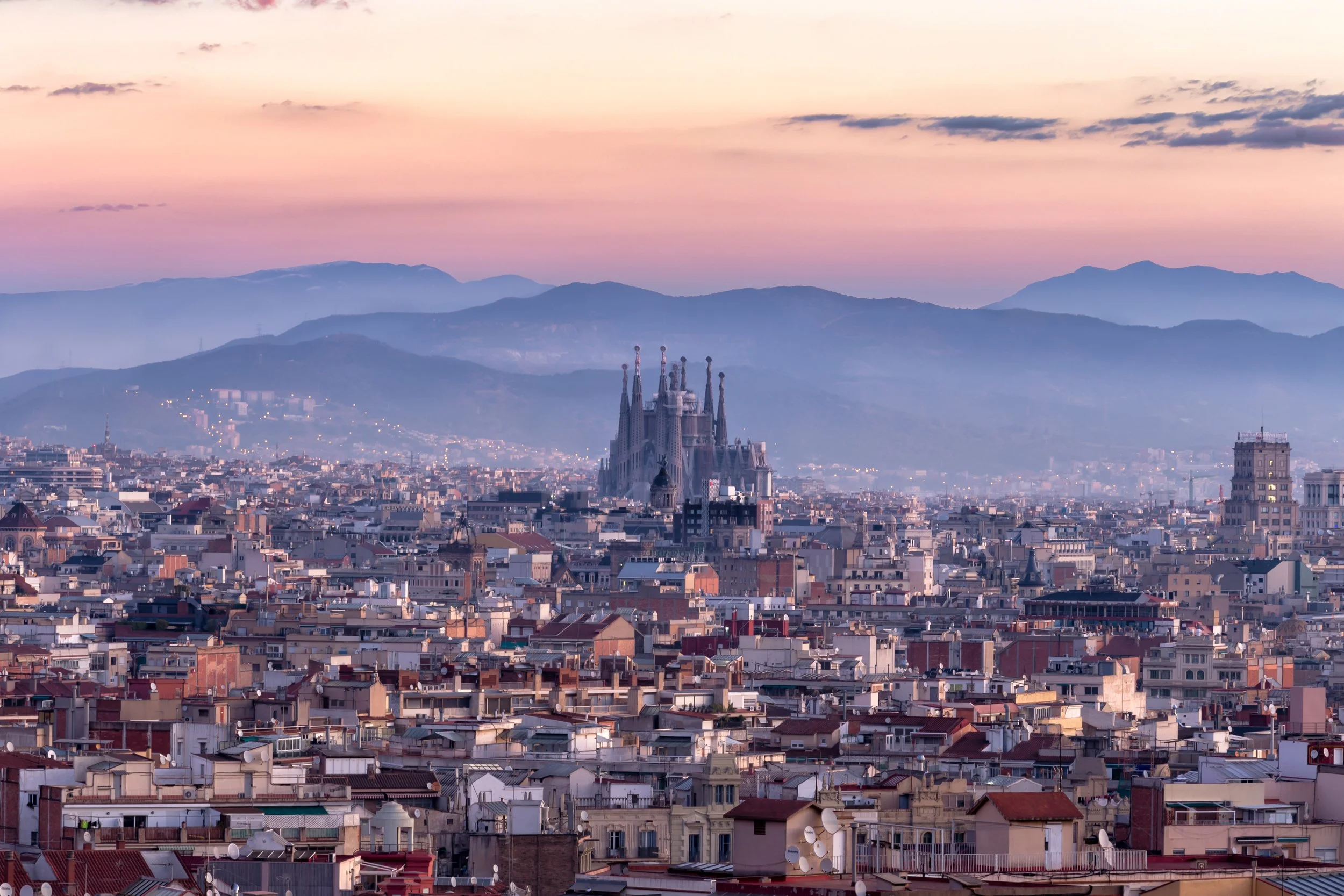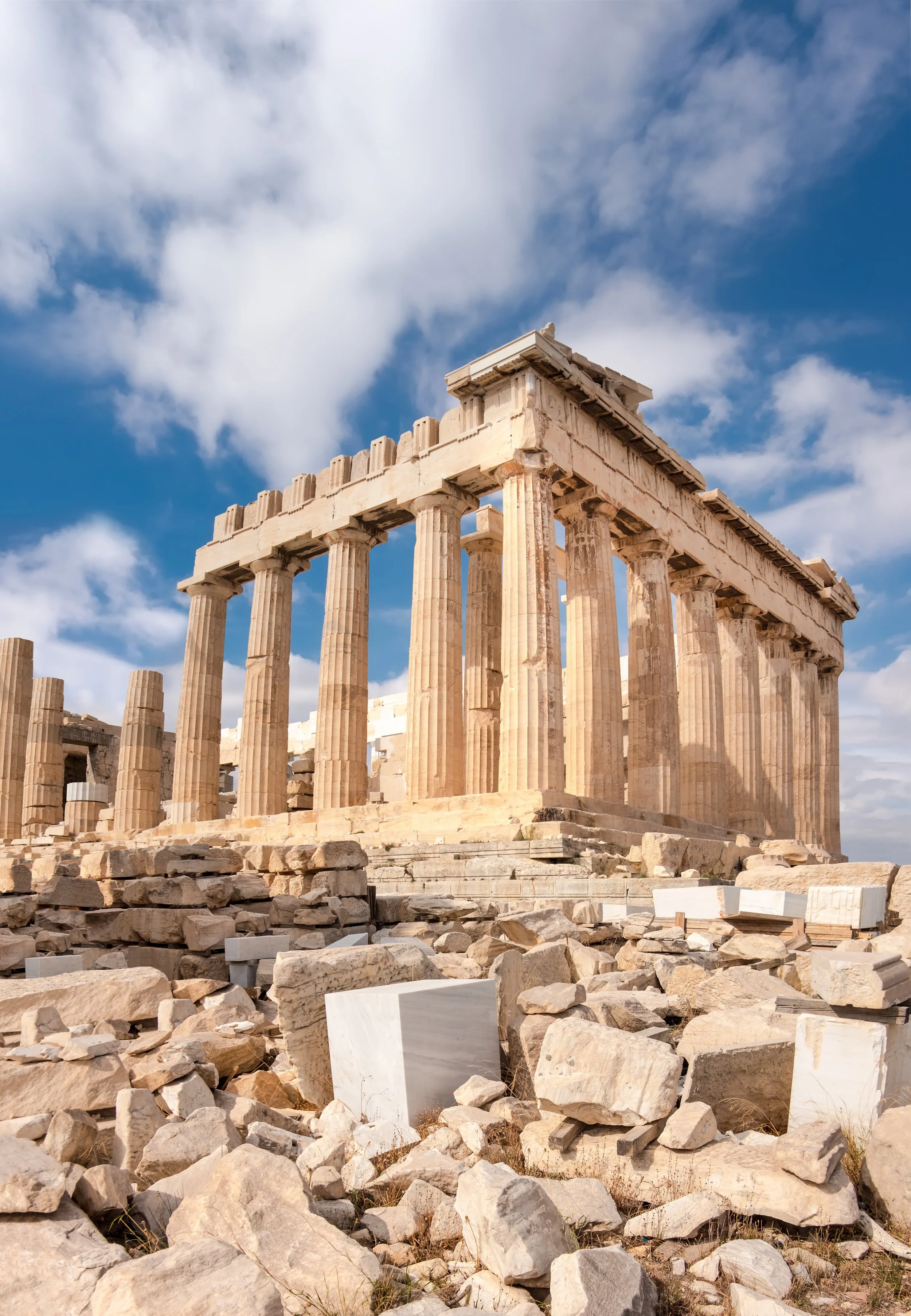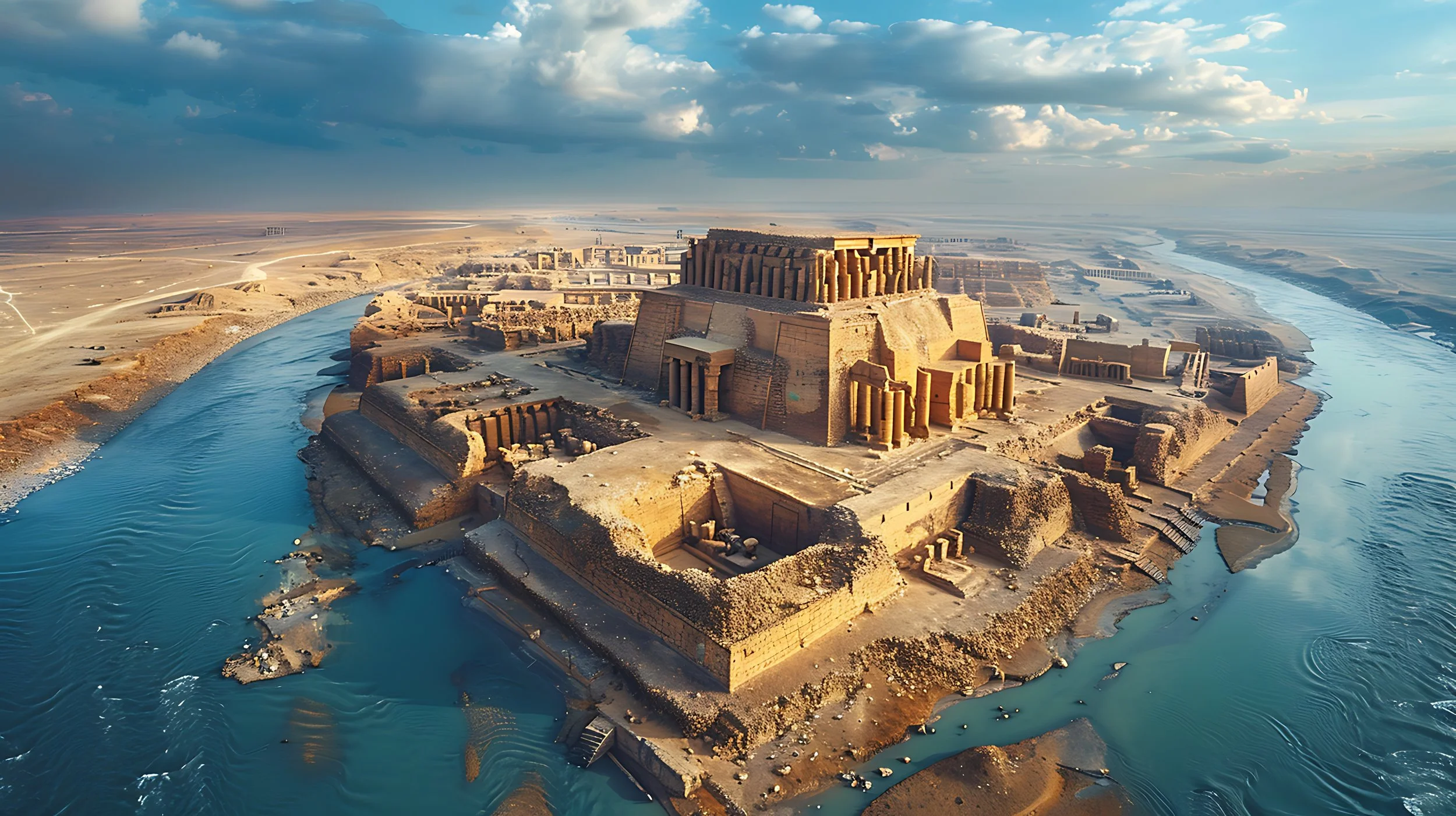Seven Things You Should Know About Craig Ellwood: The California Mies van der Rohe.
1. Craig Ellwood is often referred to as the California Mies van der Rohe because of his crisp, finely detailed minimalist buildings. The floorplans and massing of his buildings were often simple rectangles and boxes. Ellwood was strongly opposed to arbitrary formalism in architecture and “playing with shapes” as he stated in an interview in 1976. He believed that the moment form becomes arbitrary or only style, it becomes something other than architecture. He believed that the technology and materials used in a building should dictate the form. His buildings utilized mainly steel glass, plastic and masonry. Ellwood was fascinated by the efficiency and fabrication techniques of steel and other industrial materials of the time.
2. Ellwood was born as Johnie Burke in Clarendon, Texas in 1922. He would end up changing his name to Craig Ellwood informally, then legally in 1948. The name “Ellwood” came from a liquor store across the street from the office he used to work out of. He would design the persona of “Craig Ellwood” as half Architect half movie star. Ellwood was a car fanatic and drove a red sportscar with the license plate “VROOM.”
3. Ellwood partnered with his brother Cleve who was a licensed contractor and a student draftsman named Pete Peters. They would open a construction company in 1948 called “Craig Ellwood” which only lasted for two years. After closing the construction company, he would go on to work as a cost estimator for Lamport Cofer Salzman. During his time as an estimator here he would meet John Entenza. In 1949 he would open Craig Ellwood Associates. In 1951 Entenza invited Ellwood to take part in the Case Study House program.
4. John Entenza selected Ellwood to design three houses for the Case Study House program. Case study houses 16, 17, and 18. All three would be built between 1952 and 1958. The case study houses Ellwood designed were flat roofed, post and beam structures. Their profiles were generally long and horizontal in elevation. The details of the houses were thoughtful and well executed.
5. Elwood was not a licensed Architect. He was trained as an engineer through a series of night classes at UCLA although never formally earning his engineering degree. It is said that he rarely would exceed his client’s budgets due to his background in engineering and cost estimating. Ellwood would rely heavily on his staff to carry out the designs in his office. The would cause tension within the firm and result in several of his lead designers and architects leaving the company.
6. Two of the most well know projects from Ellwood’s office were beach houses in Malibu. One for the Pierson family and the other for Victor and Elizabet Hunt. The Hunt’s found Ellwood after seeing the completed Pierson house. Ellwood was a marketing genius and was able to get the Hunt house published eight times between December 1958 and 1960.
7. Ellwood would retire in 1977 and move to Italy to pursue painting and sculpture. He would become alcoholic and pass away in 1992.
References:
Architecture of the sun: Los Angeles modernism, 1900-1970 Thomas Hines - Rizzoli – 2010
Modern architecture since 1900 William Curtis - Phaidon - 2013
Join Mitchell Rocheleau, Principal Architect of ROST Architects, as he travels to Amsterdam Noord, Netherlands to explore the thriving community that has been created here, collective housing developments, and the emerging experimental architecture throughout the city. He discusses with Jelte Van Koperen, from CityLoop, the latest urban developments emerging, innovative experimental architecture and the community that has formed in Amsterdam Noord. They explore the area once known for its shipping industry, which now houses the NDSM Cultural Center and analyze the deep history that is present in the area. With the spirit of optimism, the willingness to experiment, to create something with the conditions that they had at hand - the Dutch were able to create environments that promote authentic expression.
Mitchell Rocheleau, Principal Architect of ROST Architects, meets with Charlie Duff, author of "The North Atlantic Cities" and developer and planner in the city of Baltimore, Maryland. They discuss Dutch history, from the communal efforts of seafaring and building canals, to creating robust cities in the "Golden Age". Through historical influence, they analyze how the Row House became a footprint for a healthy city, as well as the similarities between cities like London and Amsterdam and such as Boston and New York, in the United States. By analyzing the reasons cities were first created, we can better understand how to create cities and places for our future generations.
Principal Architect, Mitchell Rocheleau meets Islam Issa, an award-winning Egyptian-British author, broadcaster, and the new Professor of Public Humanities at Birmingham City University, to discuss the Ancient City of Alexandria. Learn about the thoughtful planning that went into the city, the Lighthouse, and Library of Alexandria as well as what values were prioritized in its creation by Alexander the Great. What can we learn about an ancient city to create thoughtful cities for today's world?
Explore the fascinating origins of Egypt’s ancient civilization with Mitchell Rocheleau of ROST Architects, from the early settlers near the Nile to the awe-inspiring construction of the Great Pyramid. This video explores the pivotal role the Nile River played in shaping Egypt’s agriculture, culture, and monumental architecture. Discover the innovations behind the Pyramids, the role of the Giza Plateau, the workers’ village, and the mystery surrounding Khufu’s reign. Uncover recent discoveries and speculations that challenge our understanding of Egypt's greatest architectural marvel.
What if our cities were designed to heal? How can we design cities that offer places of wellness and connectivity?
Mitchell Rocheleau, Principal Architect of ROST Architects travels to Amsterdam to explore how Restorative Urbanism, an approach that analyzes how urban design can support mental health, has the power to foster change in our cities and our interconnected lives. He touches on psychosocial health, the importance of walkable cities, our sensory perceptions in urban environments, as well as his personal experiences in cities.
Join Principal Architect, Mitchell Rocheleau in this interview with Dr. Moudhy Al-Rashid, author of "Between Two Rivers: Ancient Mesopotamia and The Birth of History", Historian and honorary fellow at Wolfson College, University of Oxford. We discuss the importance of the creation of cities, early beginnings of Mesopotamia as a place and the incredible technologies from irrigation and writing systems that were essential to the environment. Watch to understand why studying ancient Mesopotamia is vital for our understanding of our present societies and how evolution of these creations has affected our current life and the ways in which we access basic needs.
Mitchell Rocheleau of ROST Architects dives into the fascinating story of Central Park's creation, from its inception as a public space for all New Yorkers to its role as a restorative haven and symbol of democratic ideals. Why is Central Park important for our generation to understand? Through collective self-awareness and community intention Central Park's design created an enduring legacy as a place for recreation, social interaction, and civic engagement. Through reconnection with the natural world and exposure to nature in an individual's life, New York was able to make a cultural statement for restorative public space within a city.
Most of what makes Amsterdam attractive to travelers can be attributed to the Dutch society of the 17th century, which we call the Dutch Golden Age. It was the age of artists like Rembrandt and Vermeer. This society transformed a swampy bog into one of the world's most beloved and charming cities. The artists of the Dutch Golden Age painted unapologetically realistic scenes of everyday life in their cities. Many of these scenes portray people in their homes and towns, performing daily life's unspectacular, mundane tasks together.
Architect Mitchell Rocheleau discusses the importance behind Architecture History. Architecture can provide glimpses into human history, allowing us to understand the evolution and development of the human species. Learn the stories Architecture History tells us, from prehistoric structures to contemporary architecture, we can see what was important to humans at the time.
Alexandria is often overlooked when in comparison with ancient Athens or Rome. However, this city does deserve some further investigation due to its interesting philosophies, ideas, and concepts that it was conceived upon, primarily those of Alexander the Great, and how he conceived the city, how he founded it, and how he began to lay out the preliminary planning of the city.
Recent restoration and analysis of the Parthenon, in tandem with other discoveries, have uncovered a wealth of new information regarding this iconic architectural masterpiece. Much of this information challenges and presents new perspectives about the conventional understanding of the structure.
Principal and Architect of ROST Architects, Mitchell Rocheleau, meets with Mike Parker Pearson. Mike is an English archeologist specializing in the study of Neolithic Britain, most notably Stonehenge. He was the director at the Stonehenge Riverside Project and the author of several books, including Stonehenge - A New Understanding.
Architect Mitchell Rocheleau travels to the Roman Baths in Bath, England, to uncover the stories about the people who engineered, built, and used this stunning Roman bathing complex. High-quality on-site footage and detailed expert interviews reveal captivating insights into this ancient site. This in-depth documentary will give viewers a genuine appreciation and understanding of this architectural marvel.
Shrouded in mystery, the pyramids are a captivating enigma calling us to unravel their secrets. Built over 4,500 years ago, they are one of the best-known manifestations of a civilization's belief systems in the built environment. The Egyptians had a distinct perspective on human existence and the afterlife that was reflected in their architecture.
Principal and Architect of ROST Architects, Mitchell Rocheleau, meets with Jonathan Foyle, lecturer, historian, and broadcaster. Author of "Lincoln Cathedral: The Biography of a Great Building."
Investigating why our ancestors began building architecture and congregating in cities can reveal fundamental insights about human nature. There is no better place to start than with the development of the first cities in ancient Mesopotamia. The city has always been where people congregate, and ideas, innovation, and progress flourish. People come to the city to reinvent and express themselves and test and share their ideas, wherein, simultaneously, culture evolves and civilization progresses. Since their conception, cities have always been nuclei of human advancement.
Principal and Architect of ROST Architects, Mitchell Rocheleau, discusses the significance of The Grand Louvre designed by Architect I.M. Pei, the history of the Louvre, design process, design theory and ideas behind the project.
Principal and Architect of ROST Architects, Mitchell Rocheleau, meets with Keiran Murphy, a nationally recognized historian on Frank Lloyd Wright and his estate in Spring Green, Wisconsin, home of the Taliesin Fellowship.
Principal and Architect of ROST Architects, Mitchell Rocheleau, meets with John Lobell, a professor at Pratt Institute and expert on Louis Kahn, to discuss the architecture and philosophy of Louis Kahn.
What makes Stonehenge so captivating? This enigmatic Neolithic monument offers a window into our past and the lives of our ancestors. Stonehenge provides insights into their values, societal norms, and psychology. It unveils their astonishing level of sophistication, intricate communication networks, complex collaboration methods, and a deeply intuitive community with a profound understanding of materials, construction techniques, ecology, and astronomy. This megalithic marvel has the potential to enlighten us about our own journey and the evolution of our species.
I want to take you on a journey back in time in the southwest of present-day Britain, near a bend in the river Avon. Here, a natural geological process dispelled warm, mineral-rich water from deep within the earth.
The ancient people who inhabited this area believed these healing and mystical waters were a gift from the gods and were presided over by an ancient goddess named Sulis.
Why is Taliesin West significant in the history of American culture and Architecture? Taliesin West was a petri dish breeding a new lifestyle based on freedom, connection with nature, and a spirit of innovation. It challenged the conventional way of living at the time through its philosophies, daily rituals, and the work that was produced there. Most importantly, its architecture was a direct reflection of this lifestyle.
Mitchell Rocheleau, meets with Roderick Beaton to discuss Ancient Greek Culture & Cities, and the impact it has on modern day city design.
Throughout its existence, Venice and its people have had a unifying narrative: the struggle against water. Although the rising sea levels have resulted in death, destruction, and flooding, it has also served a valuable role as the collective antagonist of the Venetian people. It is human nature to band together when faced with a common challenge or adversary. Through necessity and under the constant threat of rising tides, Venetians developed ingenuity, a work ethic, and a common purpose. The bond created by this struggle has been one of the key ingredients to the progress and prosperity of Venice.
American artist Edward Hopper spent significant time observing the city and generated a body of work that resonated with the country. He seemed to be drawn to city life, buildings, and infrastructure. Much of his work depicts the relationship between the city, nature, and people.
Why is Central Park important for our generation to understand? Why would a park constructed in the late 1800’s be significant to our contemporary society? Central Park depicted a moment in our civilization when humans experienced a shift and moment of self-awareness regarding our nature as humans and the environment we were creating. In the late 1800s, New Yorkers stopped and questioned the growing and developing city around them.
Why would we be interested in understanding the first settlers of New York City? New York has been a pivotal city in the history of America and the world. One of its ingredients of success lies in the mindset, values, philosophies, and way of life of the people who founded and grew the city. These ideas were manifested in the city's fabric and directly affected the shape of the urban environment.
A slow yet palatable transition within the city started around the sixteenth century. The forces of religion that had driven the city started to contend with a new stimulus based on money and profits. The mercantilist and capitalistic philosophies began manifesting in the city's physical form. The town was still firmly rooted in its medieval customs and structures; however, it was clear that things were changing throughout the Western world.
In the early 1960s, like many cities worldwide, Copenhagen began carving out spaces for the automobile by building streets, highways, and parking inside the city. A group of architects and urban designers predicted the detrimental impacts this could have on the form and life of their town. When the city began to fall into economic decline, the local government showed receptivity to the Architects' ideas and began taking action to revitalize the city.






























Notre Dame Cathedral had the power to embed itself into more than just the cityscape. It made its way into the hearts of the people of Paris. When the Cathedral was engulfed in flames on April 15th, 2019, we were reminded that the architecture around us impacts our lives beyond functionality. Principal and Architect of ROST Architects, Mitchell Rocheleau, discusses the history, architecture, and the architectural power of Notre Dame Cathedral.